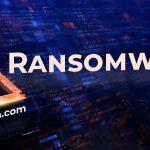In the vast landscape of cyber threats, phishing emails continue to be a persistent and dangerous avenue for scammers to exploit unsuspecting individuals. One such deceptive scheme that has recently emerged is the “CashAid Project” email scam. This article aims to delve into the intricacies of this scam, providing insights into its actions, consequences, and preventive measures.
Introduction to the CashAid Project Email Scam
The “CashAid Project” email scam disguises itself as a charitable initiative, claiming that the recipient has been selected as a beneficiary for a substantial grant. The email purports to be from Marvin Hollis, a supposed Disbursement Officer at the Children Charity Foundation (CCF). The scam lures recipients with the promise of a generous grant divided into two parts: a portion dedicated to charity work for underprivileged children and another allocated for the recipient’s personal business development.
Actions and Consequences
1. Deceptive Claim
- The email falsely asserts that the recipient’s email address was randomly chosen during a selection process involving seminar/conference attendees and internet users.
2. False Grant Offer
- The scam promises a significant grant of $2,740,000, creating a sense of urgency and excitement.
3. Request for Personal Information
- To proceed with the alleged grant release, recipients are prompted to fill out a “Grant Payment Scheme Voucher Form” (GPSV) attached to the email. This is an attempt to extract sensitive personal information.
4. Financial Exploitation
- Scammers may seek upfront fees or additional charges under various pretexts, exploiting recipients financially.
Prevention and Best Practices
1. Be Skeptical
- Exercise caution when receiving unexpected emails, especially those claiming unexpected windfalls or grants.
2. Verify Legitimacy
- Verify the legitimacy of unsolicited emails by directly contacting the supposed sender using official contact information, not information provided in the email.
3. Avoid Clicking Links or Downloading Attachments
- Refrain from clicking on links or downloading attachments in unsolicited emails, as they may contain malicious content.
4. Never Share Personal Information
- Avoid sharing personal or financial information in response to unsolicited emails.
5. Stay Informed
- Stay updated on common phishing tactics and threats circulating online.
6. Use Two-Factor Authentication
- Enable two-factor authentication on your email and online accounts for an added layer of security.
Conclusion
Phishing emails, such as the “CashAid Project” scam, exploit trust and goodwill for malicious purposes. By staying vigilant, verifying the legitimacy of unexpected communications, and adopting secure online practices, individuals can protect themselves from falling victim to such deceptive schemes. Remember, skepticism and caution are powerful tools in the fight against cyber threats.




